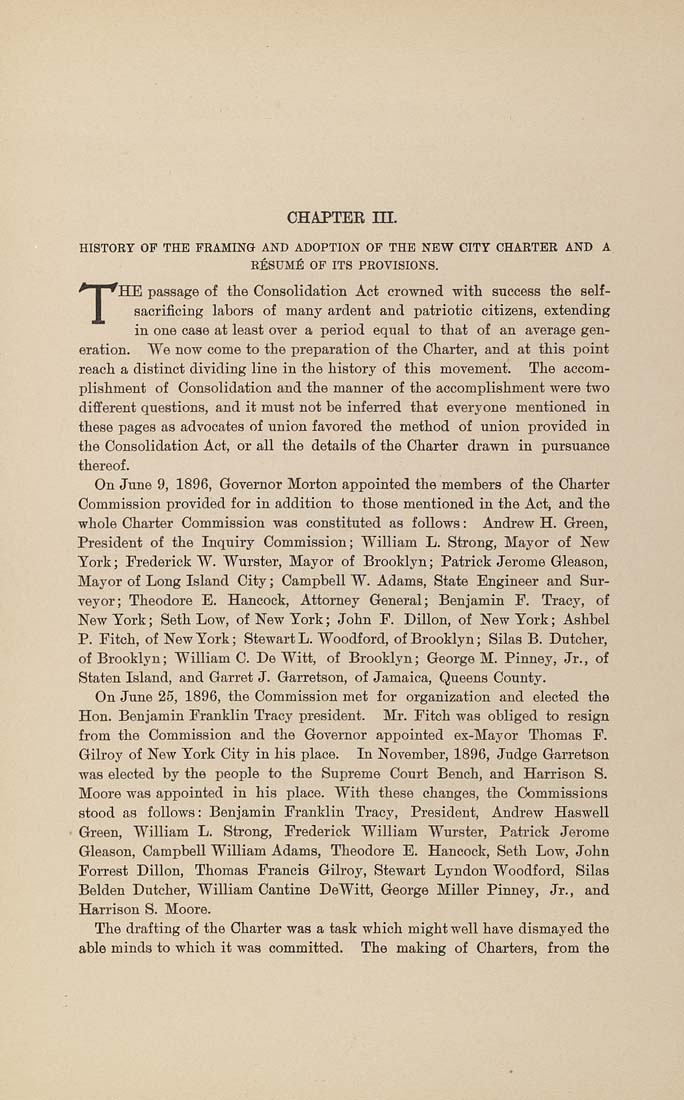CHAPTER m.
HISTORY OF THE FRAMING AND ADOPTION OF THE NEW CITY CHARTER AND A
EiESUMfi OF ITS PROVISIONS.
THE passage of the Consolidation Act crowned with success the self-
sacrificing labors of many ardent and patriotic citizens, extending
in one case at least over a period equal to that of an average gen¬
eration. We now come to the preparation of the Charter, and at this point
reach a distinct dividing line in the history of this movement. The accom¬
plishment of Consolidation and the manner of the accomplishment were two
different questions, and it must not be infeiTed that everyone mentioned in
these pages as advocates of union favored the method of union provided in
tlie Consolidation Act, or all the details of the Charter drawn in pursuance
thereof.
On June 9, 1896, Governor Morton appointed the members of the Charter
Commission provided for in addition to those mentioned in the Act, and the
whole Charter Commission was constituted as follows: Andrew H. Green,
President of the Inquiry Commission; William L. Strong, Mayor of New
York; Frederick W. Wurster, Mayor of Brooklyn; Patrick Jerome Gleason,
Mayor of Long Island City; Campbell W. Adams, State Engineer and Sur¬
veyor; Theodore E. Hancock, Attorney General; Benjamin F. Tracy, of
New York; Seth Low, of New York; John F. Dillon, of New York; Ashbel
P. Fitch, of NewYork; Stewart L. Woodford, of Brooklyn; Silas B. Dutcher,
of Brooklyn; William C. De Witt, of Brooklyn; George M. Pinney, Jr., of
Staten Island, and Garret J. Garretson, of Jamaica, Queens County.
On June 25, 1896, the Commission met for organization and elected the
Hon. Benjamin Franklin Tracy president. Mr. Fitch was obliged to resign
from the Commission and the Governor appointed ex-Mayor Thomas F.
Gilroy of New York City in his place. In November, 1896, Judge Garretson
was elected by the people to the Supreme Court Bench, and Harrison S,
Moore was appointed in his place. With these changes, the Commissions
stood as follows: Benjamin Franklin Tracy, President, Andrew Haswell
Green, William L. Strong, Frederick William Wurster, Patrick Jerome
Gleason, Campbell William Adams, Theodore E. Hancock, Seth Low, John
Forrest Dillon, Thomas Francis Gilroy, Stewart Lyndon Woodford, Silas
Belden Dutcher, William Cantine DeWitt, George Miller Pinney, Jr., and
Harrison S. Moore.
The drafting of the Charter was a task which might well have dismayed the
able minds to which it was committed. The making of Charters, from the
|








